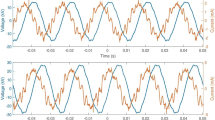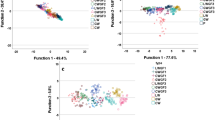Abstract
There is a growing interest in developing gluten-free bakery products in recent time. In cake making, gluten network formation is not essential, but hardly any information exists about the influence of the gluten-free flour characteristics affecting the final cake product. This study analyses the influence of two different rice cultivars (short and long) with different flour particle size in batter characteristics (specific volume, viscosity and internal structure) and in sponge and layer cake formulas (volume, shape, texture and colour). During starch gelatinization, the finest flours (median particle size finer than 100 μm) increased their viscosity and reached the peak viscosity (RVA) later than the coarsest flours. Moreover, the finest flours gave batters with lower specific volumes but with an air distribution in smaller and uniform bubbles in both formulas. These flours also produced higher volume and lower firmness in sponge cakes and greater symmetry index both in sponge and layer cakes. The rice type also influenced batter and cakes characteristics but in a lesser extent. The different results obtained depending on the rice flour particle size, type flour and cake formulation indicate the need to define them both in industrial specifications and in research studies.



Similar content being viewed by others
References
AACC (2010). Approved methods of the American Association of Cereal Chemists, methods 46-30.01 (protein), 88-04 (WHC), 76-20 (total starch and amylose content), 61-02.01 (pasting properties), 10-91.01 (cake symmetry and volume index), 55-40.01 (Particle Size of Wheat Flour by Laser Instrument), 55-50.01 (Specific volume), 61-02.01 (Determination of the Pasting Properties of Rice with the Rapid Visco Analyser), 74-10.02 (Measurement of Bread Firmness—Compression Test), 14-22.01 (Colour of Pasta—Reflectance Colorimeter Method), 11st ed. St. Paul: American Association of Cereal Chemists.
Bean, M. M., Elliston-Hoops, E. A., & Nishita, K. D. (1983). Rice flour treatment for cake-baking applications. Cereal Chemistry, 60(6), 445–449.
Catassi, C., & Fasano, A. (2008). Celiac disease. Current Opinion in Gastroenterology, 24(6), 687–691.
Crosbie, G. B. & Ross, A. S. (2007). Particle size effects. In: The RVA handbook, p. 15. St. Paul: American Association of Cereal Chemists.
Gaines, C. S. (1985). Associations among soft wheat flour particle size, protein content, chlorine response, kernel hardness, milling quality, white layer cake volume, and sugar-snap cookie spread. Cereal Chemistry, 62, 290–292.
Gelinas, P., Roy, G., & Guillet, M. (1999). Relative effects of ingredients on cake staling based on an accelerated shelf-life test. Journal of Food Science, 64(5), 937–940.
Gomez, M., Manchon, L., Oliete, B., Ruiz, E., & Caballero, P. A. (2010a). Adequacy of wholegrain non-wheat flours for layer cake elaboration. LWT- Food Science and Technology, 43, 507–513.
Gomez, M., Ruiz-París, E., & Oliete, B. (2010b). Influence of flour mill streams on cake quality. International Journal of Food Science and Technology, 45, 1794–1800.
Gomez, M., Ruiz, E., & Oliete, B. (2011). Effect of batter freezing conditions and resting time on cake quality. LWT- Food Science and Technology, 44, 911–916.
Gupta, M., Bawa, A. S., & Semwal, A. D. (2009). Effect of barley incorporation on the instrumental texture of sponge cake. International Journal of Food Properties, 12(1), 243–251.
Ha, M. S., Roh, Y. W., Hong, K. P., Kang, Y. S., Jung, D. C., Kim, K. H., et al. (2007). Textural properties of processed foods produced from newly developed non-glutinous rice cultivars. Food Science and Biotechnology, 16, 789–795.
Johnson, F. S. (1990). Characteristics of muffins containing various levels of waxy rice flour. Cereal Chemistry, 67(2), 114–118.
Karahman, K., Sakiyan, O., Ozturk, S., Koksel, H., Sumnu, G., & Dubat, A. (2008). Utilization of Mixolab to predict the suitability of flours in terms of cake quality. European Food Research and Technology, 227, 565–570.
Lin, Q. L., Xiao, H. X., Fu, X. J., Tian, W., Li, L. H., & Yu, F. X. (2011). Physico-chemical properties of flour, starch and modified starch of two rice varieties. Agricultural Sciences in China, 10, 960–968.
Martínez-Cervera, S., Sanz, T., Salvador, A., & Fiszman, S. M. (2012). Rheological, textural and sensorial properties of low-sucrose muffins reformulated with sucralose/polydextrose. LWT- Food Science and Technology, 45, 213–220.
Mohamed, S., & Hamid, N. A. (1998). Effects of ingredients on the characteristics of rice cakes. Journal of the Science of Food and Agriculture, 76, 464–468.
Mustalahti, K., Catassi, C., Reunanen, A., Fabiani, E., Heier, M., McMillan, S., et al. (2010). The prevalence of celiac disease in Europe: results of a centralized, international mass screening project. Annals of Medicine, 42(8), 587–595.
Oliete, B., Pérez, G. T., Gómez, M., Ribotta, P. D., Moiraghi, M., & León, A. E. (2010). Use of wheat, triticale and rye flours in layer cake production. International Journal of Food Science and Technology, 45(4), 697–706.
Perez, C. M., & Juliano, B. O. (1988). Varietal differences in quality characteristics of rice layer cakes and fermented cakes. Cereal Chemistry, 65(1), 40–43.
Purlis, E. (2010). Browning development in bakery products—a review. Journal of Food Engineering, 99(3), 239–249.
Ragaee, S., & Abdel-Aal, S. M. (2006). Pasting properties of starch and protein in selected cereals and quality of their food products. Food Chemistry, 95, 9–18.
Ronda, F., Gomez, M., Caballero, P. A., Oliete, B., & Blanco, C. A. (2009). Improvement of quality of gluten-free layer cakes. Food Science and Technology International, 15, 193–202.
Sahi, S. S. (2008). Cake emulsions: factors affecting the stability of foams and emulsions in cake batters. In Sumnu & Sahin (Eds.), Food engineering aspects of baking sweet goods (pp. 87–89). Boca Raton: CRC.
Sahi, S. S., & Alava, J. M. (2003). Functionality of emulsifiers in sponge cake production. Journal of the Science of Food and Agriculture, 83, 1419–1429.
Shellenberger, J. A., Wichser, F. W., & Lamaki, R. C. (1950). Cake properties in relation to flour particle size fractions. Cereal Chemistry, 27, 106–113.
Stauffer, C. E. (1990). Functional additives for bakery foods (pp. 250–258). New York: Van Nostrand Reinhold.
Sumnu, G., Koksel, F., Sahin, S., Basman, A., & Meda, V. (2010). The effects of xanthan and guar gums on staling of gluten-free rice cakes baked in different ovens. International Journal of Food Science and Technology, 45, 87–93.
Turabi, E., Sumnu, G., & Sahin, S. (2008). Optimization of baking of rice cakes in infrared-microwave combination oven by response surface methodology. Food and Bioprocess Technology, 1(1), 64–73.
Wilderjans, E., Luyts, A., Goesaert, H., Brijs, K., & Delcour, J. A. (2010). A model approach to starch and protein functionality in a pound cake system. Food Chemistry, 120(1), 44–51.
Yamamoto, H., Worthington, S. T., Hou, G., & Ng, P. K. V. (1996). Rheological properties and baking qualities of selected soft wheats grown in the United States. Cereal Chemistry, 73, 215–221.
Yamazaki, W. T., & Donelson, D. H. (1972). The relationship between flour particle size and cake-volume potential among eastern soft wheats. Cereal Chemistry, 49, 649–653.
Zhou, W., & Therdthai, N. (2008). Heat and mass transfer during baking of sweet goods. In Sumnu & Sahin (Eds.), Food engineering aspects of baking sweet goods (pp. 173–190). Boca Raton: CRC.
Acknowledgments
This study was supported by a grant from the Spanish Ministry of Science and Innovation (grant: AGL2011-23802). The authors are grateful to Harinera Castellana (Valladolid, Spain) for supplying the raw materials and to Agro-Technical Institute—ITACYL (Castile and Leon, Spain) and to Esteve Santiago S.A. (Cabezón de Pisuerga, Valladolid, Spain) for protein and particle size measurements.
Author information
Authors and Affiliations
Corresponding author
Rights and permissions
About this article
Cite this article
de la Hera, E., Martinez, M., Oliete, B. et al. Influence of Flour Particle Size on Quality of Gluten-Free Rice Cakes. Food Bioprocess Technol 6, 2280–2288 (2013). https://doi.org/10.1007/s11947-012-0922-6
Received:
Accepted:
Published:
Issue Date:
DOI: https://doi.org/10.1007/s11947-012-0922-6




